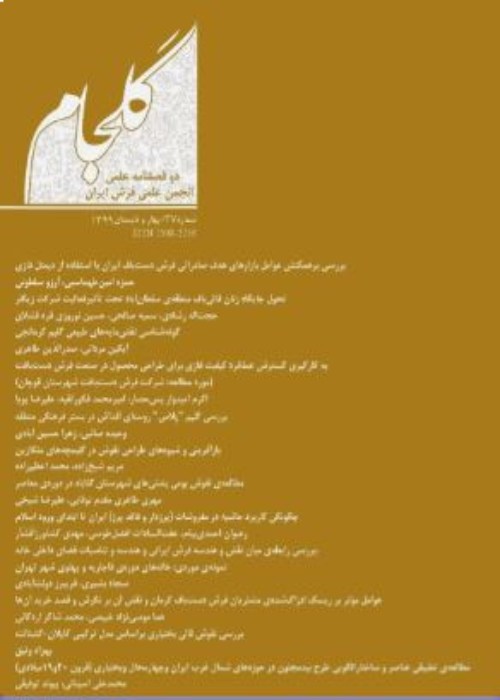Investigating the relationship between the role and geometry of Iranian carpet and the geometry and proportions of the interior of the house, a case study: Qajar and Pahlavi houses in Tehran
There are signs of compatibility between Iranian architecture and carpet in terms of geometry and proportions that the dimensions of the interior of the house and the dimensions of the carpet are closely related. Attention to the carpet in two dimensions of design and geometric dimensions has been an important factor in shaping the dimensions of the interior of the Iranian house. This study aims to study the relationship between the system of formation of interior spaces of the house (during the Qajar and early Pahlavi in Tehran) and the dimensions and geometry of the Iranian carpet to be deciphered. In this regard, descriptive-analytical method based on data analysis technique as well as field-library studies has been used. The statistical population identified the proportions of carpet indices in different parts of Iran, then they were evaluated in the proportions of house plans. Using Cochranchr('39')s formula, 30 samples of Qajar and Pahlavi houses in Tehran in the historical context of Tehran have been randomly selected that can answer the research questions with the desired degree of reliability or possible accuracy. Geometric grammars are generative systems that lead to a design based on a set of geometric rules and work on geometric rules. The methodology of the laws is the phenomenological interpretation of the houses of the Qajar period with the method of Max Wennemann. Therefore, the quality of Qajar houses in this article as a phenomenological research is based on the experience lived in the house. The results of the analysis of case studies of houses of the Qajar and Pahlavi periods in Tehran show that in most houses in Tehran, the dimensions of the rooms of the houses are based on (Iranian and Greek golden proportions), (proportions based on the roof decorations). (Proportions based on the common dimensions of the carpet, with the floor enclosing the dimensions of the carpet) was predominant. In the early Qajar period, the formation of rooms was based on the golden proportions of Iran, then in the late Qajar and Pahlavi periods The title of the main criterion for the formation of houses has been influential.
- حق عضویت دریافتی صرف حمایت از نشریات عضو و نگهداری، تکمیل و توسعه مگیران میشود.
- پرداخت حق اشتراک و دانلود مقالات اجازه بازنشر آن در سایر رسانههای چاپی و دیجیتال را به کاربر نمیدهد.



